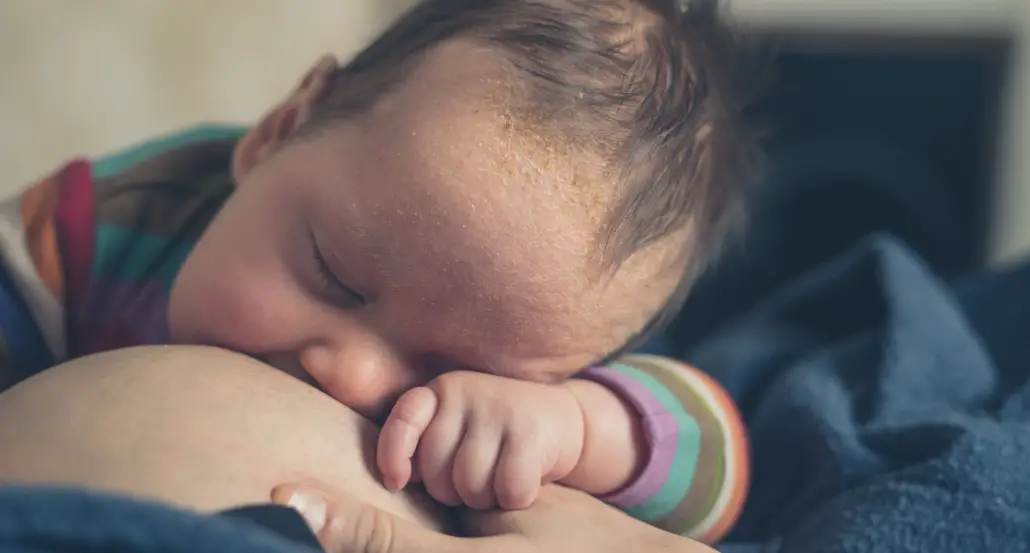Arp – hvad er arp?
Indholdsfortegnelse
Du har godt lagt mærke til noget underligt noget i dit barns hovedbund – hvad er det? Ved det næste besøg fra sundhedsplejersken spørger du og får svaret “det er arp”. Hun giver dig nogle gode råd. Men hvad er arp egentlig og hvorfor kommer det?

Du sidder med dit lille vidunder. Tænkt at du nu har noget så fantastisk i dit liv – kærligheden til dette lille væsen er ubeskrivelig. Men hvad dælen er det der er i hovedbunden på din baby? Det pynter ikke ligefrem. Arp er ikke kønt, men heldigvis kan du gøre noget ved det – du kan endda forebygge det. Vi vil her hjælpe dig med at bliv lidt klogere omkring arp, hvad er arp, hvordan behandler man arp og kan det forebygges?
Fakta om arp
- Arp er på latinsk kaldet Seboroisk Dermatitis. Det er en tilstand som typisk spændbørn får, der giver et lag af fedtede gul-brune skæl i hovedbunden. Farven minder lidt om farven på ørevoks. Det er helt ufarligt og vil forsvinde igen.
- Arp er normalt og ufarligt for din baby, men det kan give ubehag for din baby. Arp holder nemlig på kropsvarmen og kan ovenikøbet give kløe. Derudover synes de fleste mødre at det ikke er så kønt.
- Det er endnu uvist, hvad der er den direkte årsag til arp, men man det er en overproduktion af hudceller og hudfedt, der dermed laver en ophobning i stedet for at blive afstødt.
- Arpen vil ikke gå væk af sig selv og kan heller ikke vaskes væk, da arp er vandafvisende. Hvis arpen ikke fjernes vil den kunne danne sig til en tyk skorpe. Det kan derudover udvikle sig, så det kommer til at dække hovedbund, pande og øjenbrynene på din baby.
- Arpen kan i visse tilfælde brede sig til andre steder som fx ansigtet eller endnu videre andre steder på kroppen. Er dette tilfældet eller kan du ikke komme til bunds i dit barns arp, så kan det være en god ide at kontakte lægen. Herfra kan du eventuelt blive henvist til en hudlæge.
- Kraftig arpdannelse ses oftere hos børn, der også lider af børneeksem.
- Arp kan dannes på børn helt op til 3 års alderen.
Arp kan ses som en mild form for skæleksem og mange spændbørn danner arp i deres første leveuger.
Kan jeg forebygge arp?
Ved at øge blodcirkulationen i hovedbunden på dit barn, kan du være med til at forebygge dannelsen af arp. Dette kan du gøre ved at massere din babys hovedbund dagligt med et håndklæde, babybørste eller frisere med en tættekam. Du skal ikke frygte at røre ved dit barns bløde plet – fontanellen – da den er dækket med et tykt bindevæv.
Så gør det til en daglig rutine at frisere eller massere de små søde babylokker.
Hvis du bruger tættekam, skal du være opmærksom på ikke at lave rifter i barnets hovedbund, da tættekammen kan være skarp.
Hvordan fjerner man arp?
Undgå helst at fjerne arpen med en negl eller en kam, uden at have blødgjort arpen først. For du risikerer at kradse for mange hudlag af og efterlade dit barns hovedbund rød og øm.
Så første trin i fjernelsen af arp er at blødegøre arpen. Dette gør du ved at smøre det angrebne område ind i babyolie og lade det sidde. Nogle anbefalinger lyder på at lade det sidde hele natten, men her vil du opleve, at olien og arpen er indtørret næste morgen, og dermed ikke har hjulpet. Lad i stedet olien sidde et par timer. Når arpen er løsnet (dette ses når du begynder at gnubbe), gnubbes arpen af med en babytandbørste eller en tættekam. En babytandbørste kan du mildt lave cirkelbevægelser med i hovedbunden på din baby og tættekammen tager arpen mere i flager.
Det er ikke sikkert at du opnår at fjerne al arp ved første behandling. Hvis der skal flere behandlinger til, anbefaler vi at du kun skyller din babys hår med vand og undgår sæbe. Har du derimod afsluttet behandlingen helt, kan du bruge en smule baby shampoo, for at få olien bedst muligt ud af håret.
Du kan også tørre olien af med et håndklæde og dermed lade den overskydende olie forblive i hovedbunden for at trænge ind. På denne måde undgår du den udtørrende shampoo. Shampoo er normalt ikke nødvendigt for babyer, men kan bruges i dette tilfælde).
Hvordan fjerner man et tykt lag arp?
Hvis din baby er plaget af et tykt lag arp, kan en fed babycreme give bedre resultater end olien.
Cremen smøres på de angrebne områder i et godt lag, så det lidt ligner at din baby har fået en hue på. Lad cremen sidde 2-4 timer og gnub den så af med en babytandbørste eller tættekam.

